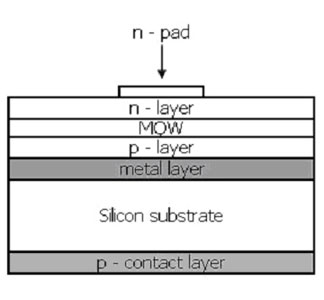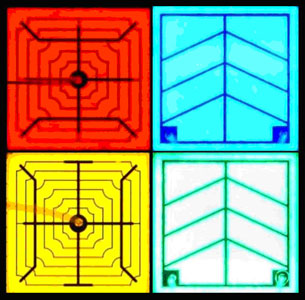High Power Opto Carves Niche in Si-based LED Chip Market
Cooling semiconductors on surface of chips
2010/01/13 | By Ken LiuAs an LED industry guru, K.H. Huang, chief executive of High Power Opto Inc. firmly believes that thermal dissipation solutions for high-power LEDs should not address system, module, and package alone. "In fact," he stresses, "dissipation on the chip is the most important factor, because the semiconductor layers are deposited on the surface of the chip. These layers are much more susceptible to heat than the circuits on the chips and, when the layers are destroyed by heat, any efforts at thermal solutions for other parts will be in vain." Huang has been in the epitaxy-wafer manufacturing sector for over 15 years.

A Northwestern University-trained Ph. D. in materials science, Huang set up Taiwan's first high-brightness epi-wafer manufacturer, United Epitaxy Co., in 1993. He notes that LED manufacturers usually grow III-IV semiconductor layers such as GaN (gallium nitride) on sapphire substrates in metal organic vapor chemical deposition (MOVCD) chambers, and then finish off production by laying out circuits on the layers. "But the point is that although sapphire has good light conductivity," Huang notes, "its thermal-conductivity performance is at the poor rate of around 35-40W/mK. Significant brightness improvement in LEDs has underscored sapphire's inefficient conductivity."

In 1998, when Huang was still chairman of United Epitaxy, he began considering the substitution of silicon wafer for sapphire as the LED substrate. "Silicon's thermal conductivity is around 125 to 150W/mK." he explains. "This is much lower than copper's 300 to 400W/mK, but it has the advantage of cost efficiency since it is mass produced on automated lines."
Huang notes that the properties of silicon fit it to one-watt to three-watt LED emitters, while copper substrate is suitable for higher wattages.
He founded High Power Opto in 2005, and its mass production of silicon-substrate LED wafers now puts the company at the cutting edge of epi-wafer manufacturing, along with Cree of the United States and Osram of Germany. "But our technology is not the same as theirs," Huang stresses, "and we have patents too."
Huang says that High Power Opto's patents involve mainly technology for removing semiconductor layers from sapphire. "We use evaporation technology to perfectly remove the layers from sapphire, neither damaging the layers nor the sapphire," he explains. The layers are mounted on silicon wafers using the eutectic die attachment approach, mixing gold with iridium at 250o Centigrade. The resulting alloy constitutes a good light conducting mechanism, making up for silicon's deficiency in this respect. Huang says that his company has applied for at last 10 patents for silicon technology.
Inevitable Trend
Huang believes that the replacement of sapphire with silicon as a substrate for high-power LED chips is inevitable. "HP lost ground to Cree and Osram in the LED sector because it did not get involved in [silicon-substrate LEDs]," he comments.
"The primary advantages of our technology are the high illumination output from the surface of the chip, low light from side and back ends, and a single wavelength of light that generates a consistent color bin," Huang stresses.
Huang notes that High Power Opto uses its technology to produce red, yellow, and green chips, which its affiliate Excellent Opto assembles into packages and lighting fixtures. "Our red and yellow chips now generate revenue of NT$50 million [US$1.5 million at NT$32:US$1] a month," he says, adding that High Power Opto recorded revenues of NT$353 million (US$11 million) in 2008, up 1.25 fold from the year before. This put the firm in the black, with an after-tax net income of NT$20 million (US$625,000), and made it the island's first money-making epi-wafer maker.
The company currently turns out 120 million si-based red and yellow chips a month and was expecting an increase to 200 million chips before the end of 2009. The company is said to have snatched up over half of the world market for high-power red and yellow LED chips.
To keep up with the growing demand, High Power Opto is constructing a new factory on a two-hectare plot in the Central Taiwan Science Park. The factory, scheduled to be completed in June 2010 with 25 MOVCD chambers, will double the company's output of red and yellow chips and boost revenue to NT$5 billion (US$156 million) a year initially. Further, the company has started developing si-based blue chips, which it will produce at the new factory so as to offer customers maximum chromaticity.




